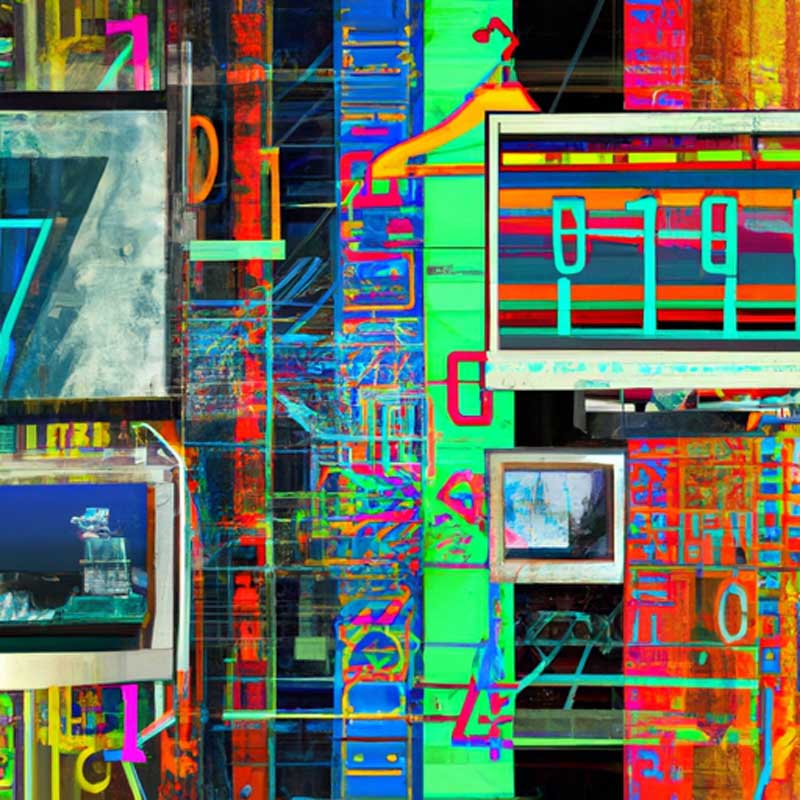TLDR:
- Two live events, Willy’s Chocolate Experience and Tommy the musical, demonstrate the importance of implementing new technology to enhance existing products.
- Willy’s Chocolate Experience used AI-generated content and underdelivered, while Tommy used projection mapping and virtual production to improve an already compelling story.
Are you using the latest buzzworthy tools for the sake of hype, or for the sake of enhancing an already-sound product? In the last month, the internet lit up about two live events that left audiences in tears. One is a masterclass in how to use new technology to enhance real-world experiences; the other is a cautionary tale. I’m obsessed with both of these for different reasons. We’ll start with the one that made children cry: In Glasgow, Scotland, a group recently marketed an immersive popup experience in a warehouse called “Willy’s Chocolate Experience.” Promo images showed lollipop fields, enchanted tunnels, live performances, and rooms made out of chocolate. The website promoting Willy’s Chocolate Experience willyschocolateexperience.com And… kids left the place crying. Because whereas the advertisements promised fun and magic, the reality looked like this: Photos from attendee Stuart Sinclair, who brought his family to the event Stuart Sinclair Around this same time, a musical with a bonkers premise entered previews on Broadway in New York. Audiences were promised something a lot more strange: A story about a kid who goes mute from witnessing a horrible trauma, gets great at pinball, and becomes a messiah figure—with laser beams in the background. MORE FOR YOU Google’s Surprise New Update Brings Unique iPhone Feature To Android Phones Apple s Surprise Update Just Made iPhone More Like Android Google Makes Another Surprise New Offer To Pixel 8 Buyers On paper, this one sounded much more likely to make you cry than a room full of lollipops. But audiences who’ve gone to the show have cried every night—in a good way. The musical is called Tommy , and it’s a reimagination of the ‘90s musical (and 1969 rock opera) by the guitarist for the band The Who . One attendee who saw it told me, “I hate the 70s. I think pinball is stupid. And I was moved so many times during the show I couldn’t believe it. The high tech production design made that immersive feeling so effective.” The Who’s Tommy revival uses virtual production and laser beams to bring a story to the stage tommythemusical.com I’m in the same boat when it comes to pinball and rock operas. But I was compelled to come on as a Co-Producer of Tommy last fall, with Rob O’Neill of Paramount Global and Broadway Cares, for that specific reason: The creators used technology to break down people’s barriers and enhance an already-compelling experience. Contrast this to Willy’s Chocolate Experience, which promised wonder and left people with buyer’s remorse and a literal allotment of two jelly beans per attendee: Two actors make the best of a tough gig at Willy’s Chocolate Experience @tomchap on X What’s interesting about this juxtaposition, to me as someone who studies leadership —and increasingly how leaders should deal with AI —is not just the Overpromise and Underdeliver factor of Willy vs the Underpromise and Overdeliver factor of Tommy . (Though that itself is a lesson that we can all use a reminder of from time to time.) It’s how both of these live productions implemented cutting-edge technology, but the way they integrated new tech created radically different outcomes. When you look closely at Willy’s Chocolate Experience, you start to notice suspicious details. The promo images have funky misspellings everywhere. It looks like an AI is attempting to show you what it thinks a wonderful chocolate experience should look like. And it turns out, upon dissection (which numerous people as equally obsessed as me did), that the entire thing was generated by AI. Top to bottom: Suspicious spelling errors indicate AI did the legwork in promoting this event willyschocolateexperience.com The website copy, the marketing materials, and even the script given to the hired actors (playing Willy, the Oompa Loompa, and the villain “The Unknown”) were generated by AI. “It Was Just Gibberish,” the actor playing Willy told Wired . This use of AI tech obviously saved the event creators a lot of time and effort. But when it came time to turn the vision into a reality in a live performance setting, the execution turned out to be both impossible and sad. In other words, Willy’s creators used new technology as a shortcut to market a product that had no substance. On the flip side, Tommy uses new technology in projection mapping and virtual production (which are currently buzzy tools in the “immersive experience” industry) in a way that levels up an experience that already has substance. The Who’s Tommy Liz Lauren Previous iterations of the story were already strong, and this modern technology had simply taken it it to a new level. Unlike what many theatre shows and “immersive” experiences do, buzzy technology is not bolted on to add buzz to the marketing of the show; it’s used as an enhancement of the core product. The lesson for leaders—especially those eyeing AI integrations into their businesses in particular—can be summed up by what Microsoft’s head of its AI Center of Excellence, Rajamma Krishnamurthy, recently told me: New technology is best used as an accelerant to already-solid strategy—not as a strategy in itself: “Always ask the question, ‘Am I doing AI because it’s AI?,” Krishnamurthy says, “Or is it part of a business strategy?’” Shane Snow is a leadership speaker, business author, and CEO of the video technology company SHOWRUNNER. Disclosure : I am a Co-Producer of The Who’s Tommy . Follow me on Twitter or LinkedIn . Check out my website or some of my other work here . Shane Snow Editorial Standards Print Reprints & Permissions
